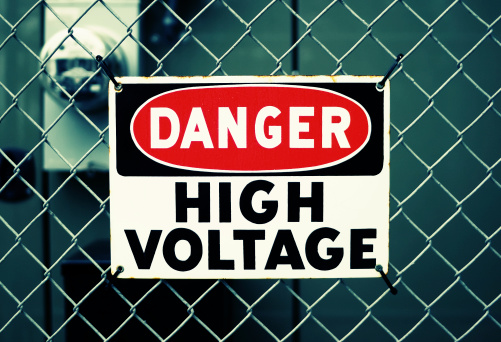Exposure to electrical currents poses serious risks, including electric shock, injury, and electrocution. To prevent these risks, employees should be able to rely on adequate electrical equipment safety in workplaces where power lines, transformers, breaker boxes, outlets, and switches are present.
Emphasizing Training for Electrical Equipment Safety
The first step to a safe workplace is a well-trained workforce. Workers must be educated about the potential hazards associated with electrical equipment and the correct procedures for working around it. Employees who service electrical components should receive education to
- Always treat electrical equipment as live.
- Implement lockout/tagout procedures.
- Effectively guard against accidental contact and enhance electrical equipment safety.
Regular safety briefings and drills can help reinforce this knowledge and ensure workers are always prepared to handle electrical equipment safely. Providing clear signage and labels on all electrical devices is crucial to remind workers of the necessary precautions and safety protocols.
Electric Equipment Guarding
Electrical shocks occur when a worker becomes part of an electrical circuit. The injury’s severity depends on two factors:
- Voltage
- Duration of exposure
Low voltages can cause pain and minor burns, while high voltages can lead to severe burns or even cardiac arrest. A minor shock can also result in serious injury if a worker is startled and falls. To minimize these risks, several storage and workspace practices can help prevent accidental shocks and injuries that might lead to workers’ compensation claims:
- Electrical components operating at 50 volts or more must be protected with covers or barriers to prevent accidental contact.
- Equipment can be housed in locked enclosures, rooms, or elevated spaces with restricted access and warning signs to prevent unauthorized entry.
- Electrical equipment can be marked with voltage, current, or wattage to inform workers about the power output.
Also read: Workers’ Compensation vs. Workplace Violence Insurance
Safe Storage Practices
Electrical boxes and equipment should be stored in dry areas, away from moisture, chemicals, and extreme temperatures. Electrical cabinets with ventilation holes need to remain unobstructed to allow proper airflow. Any electrical parts that typically spark or arc should be covered and isolated from flammable materials. Equipment should also be securely mounted to avoid movement that could expose live wires or cause accidents.
Adequate Working Space
Having a clear workspace around electrical equipment is essential for worker safety. Clearance should follow these rules:
1. Provide 36 inches of clearance for electrical equipment operating at 0-150 volts or equipment between 150-600 volts with energized parts on one side.
2. Provide 48 inches of clearance to equipment with energized and grounded parts on both sides.
These clearances ensure that workers have sufficient room to maneuver safely around electrical hazards and should never be used for storage. Keeping these areas clear prevents fire hazards and allows for safe and efficient movement around the equipment. Proper lighting in electrical workspaces is essential to enhance visibility and reduce the risk of accidents. Additionally, switches should be installed away from live electrical sources to minimize the chance of accidental contact.
Insulation and Isolation
Electrical equipment safety requires well-insulated electrical conductors and components. Insulating materials help prevent accidental contact with live wires, reducing the risk of shocks and burns. When insulation is combined with adequate isolation measures, such as placing equipment in locked rooms or enclosures, it further enhances safety by preventing unauthorized access to dangerous areas.
By implementing these safety measures, companies can significantly reduce the risk of electrical accidents, protect their workers from harm, and potentially avoid costly workers’ compensation claims.
Also read: Protecting Employees Hurt on the Job: Workers’ Compensation for Amusement Parks
Insurance Coverage Protects Your Employees and Your Business
Let McGowan Program Administrators help you safeguard your employees and protect your bottom line with a tailored solution that prioritizes electrical equipment safety. Our decades of experience supporting companies with complex, sophisticated, and challenging risks enable us to provide you with the comprehensive, highly customizable Workers’ Compensation Insurance coverage and education you need to protect your business and assets.
Contact us or call our team at 1-800-545-1538 for your free, personalized quote today.


